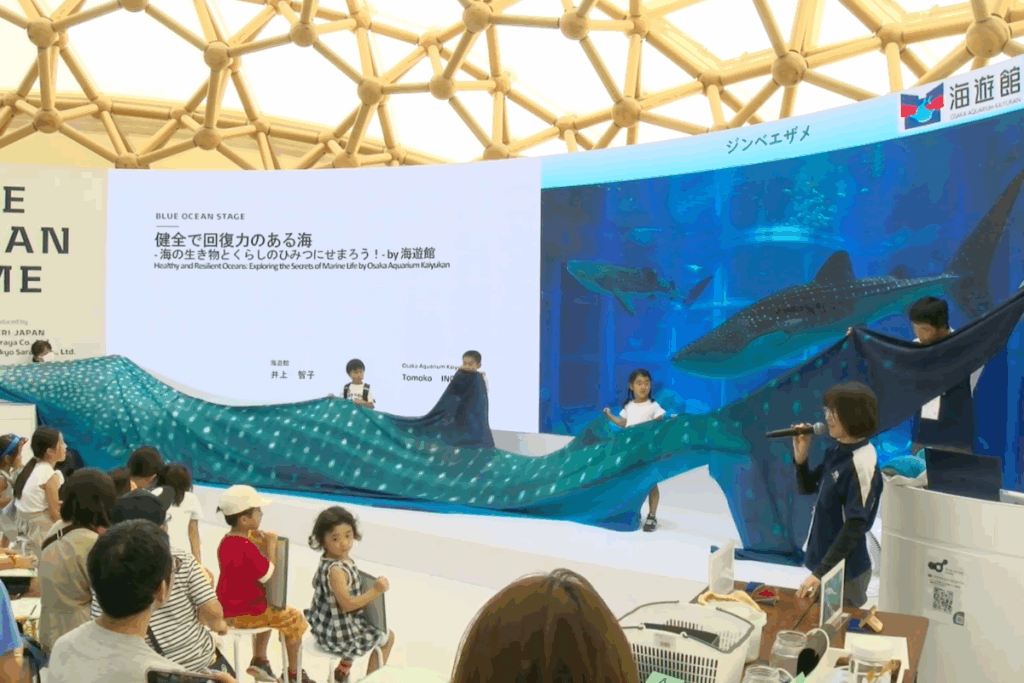
For seven days, from Monday, August 25th to Sunday, August 31st, we held lectures and workshops for parents and children, featuring games, quizzes, and crafts, based on the theme of “Seven Oceans We Want,” as advocated for in the United Nations Decade of Ocean Science.
Clean Oceans – Learn about Marine Debris and the Water Cycle! – by Kaiyukan
In the first half of Monday, August 25th, we held a workshop on marine literacy and marine debris. Led by Kaiyukan zookeeper Tomoko Inoue, she shared examples of a sea turtle accidentally eating a plastic bag and a whale shark accidentally eating a plastic comb, raising awareness of the marine debris issue.
The second half of the workshop was more interactive, featuring actual exhibits such as bigfin reef squid and baby moon jellyfish hatched at the Osaka Aquarium Kaiyukan, as well as whale shark teeth, giving children the opportunity to interact with marine life.
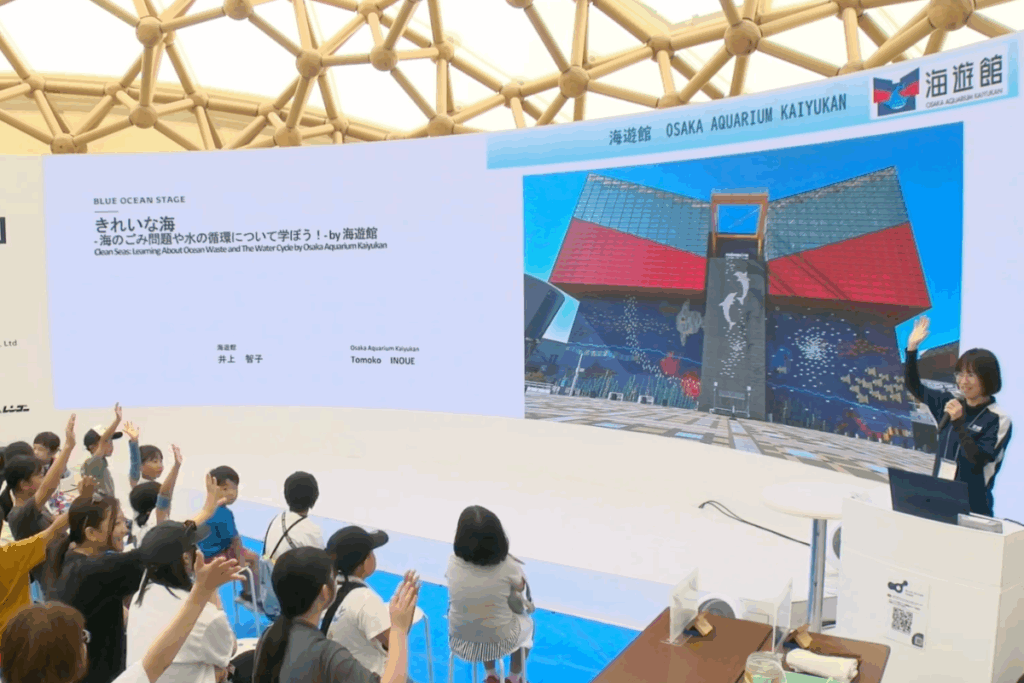
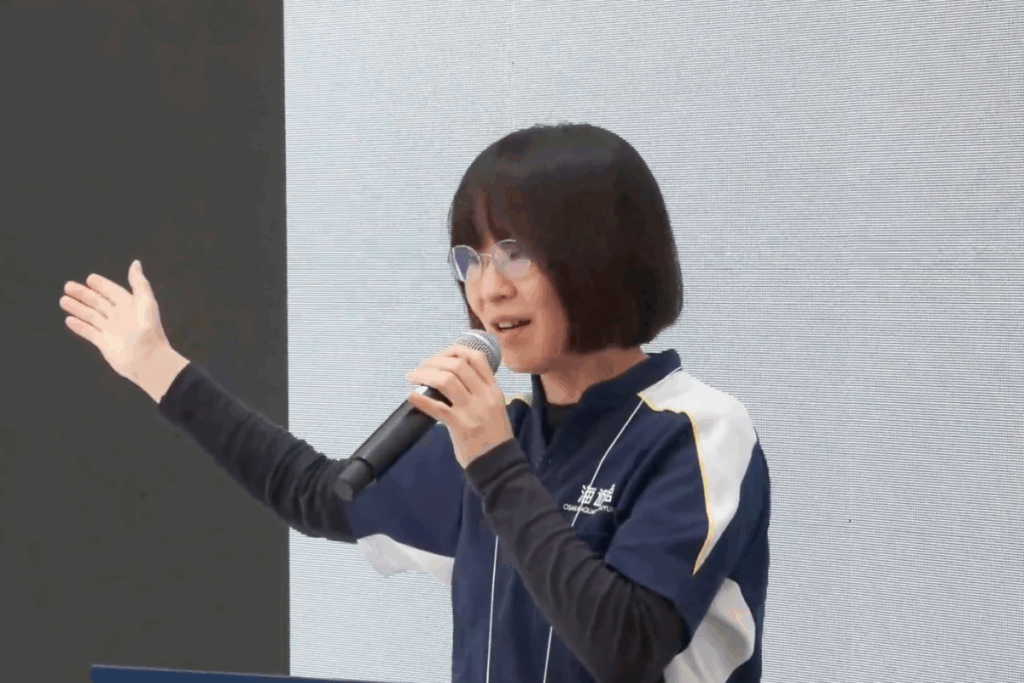
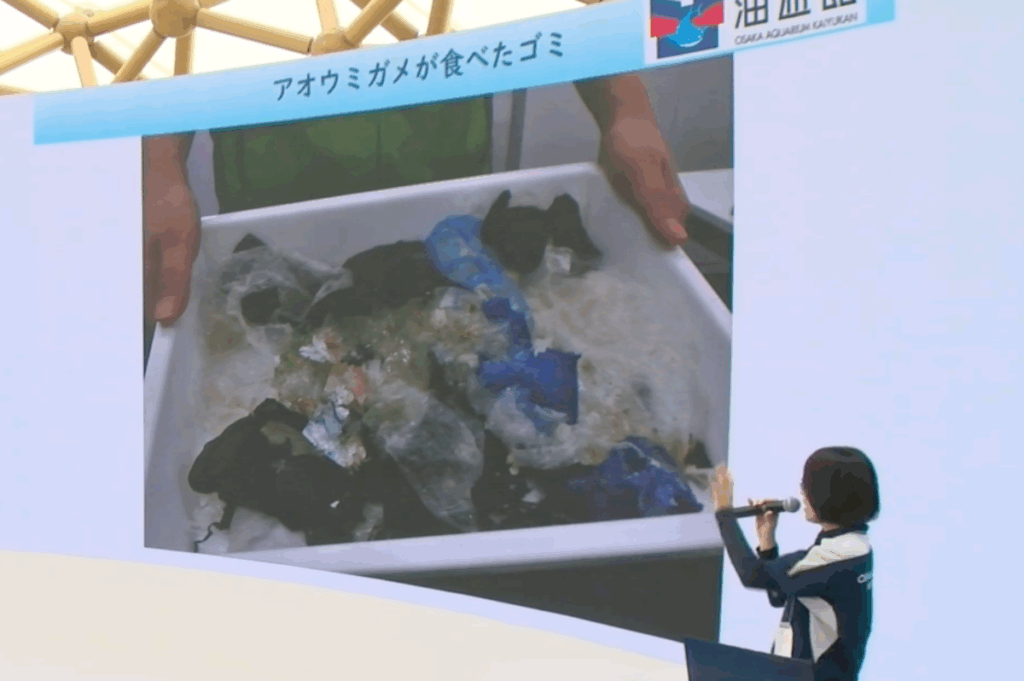
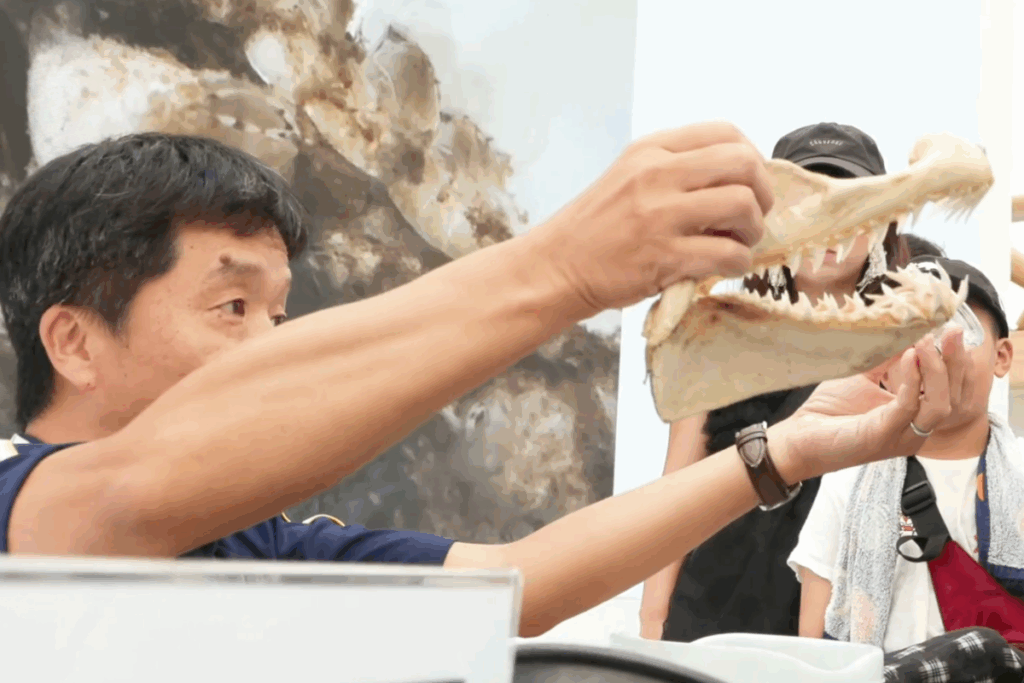
Clean Oceans – Learn About Marine Debris and the Water Cycle! – by the Kuroshio Experience Center
The second half of Monday, August 25, featured a workshop on Kashiwajima Island, located at the southwestern tip of Kochi Prefecture, led by Masaru Kanda, president of the Kuroshio Experience Center. While the waters around Kashiwajima Island are exceptionally clear and a popular diving spot, he explained that increasing marine debris has led to microplastics, even seemingly clean shorelines, containing harmful microplastics that are harmful to marine life.
At the end of the workshop, participants poured water onto sand brought from Kashiwajima and demonstrated how microplastics floated to the surface, raising awareness of the current marine debris problem.
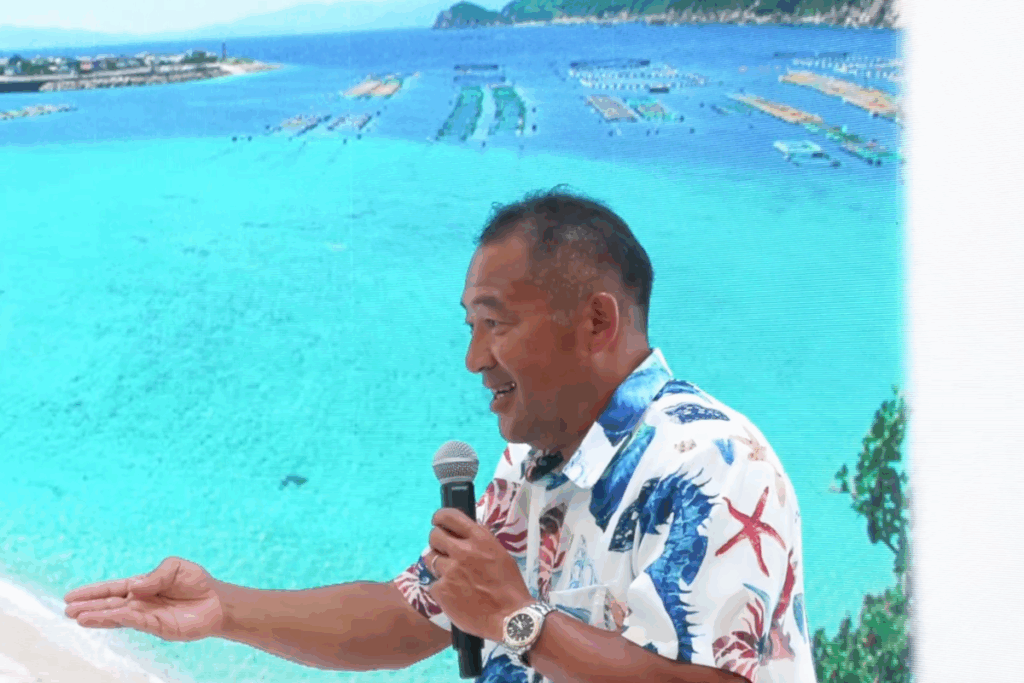
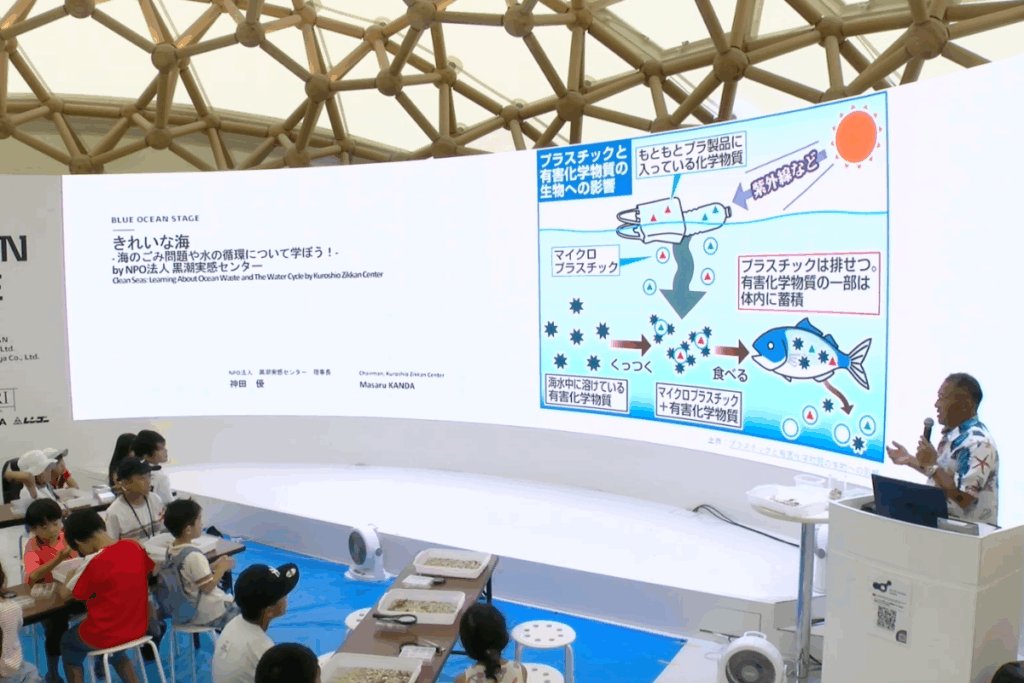
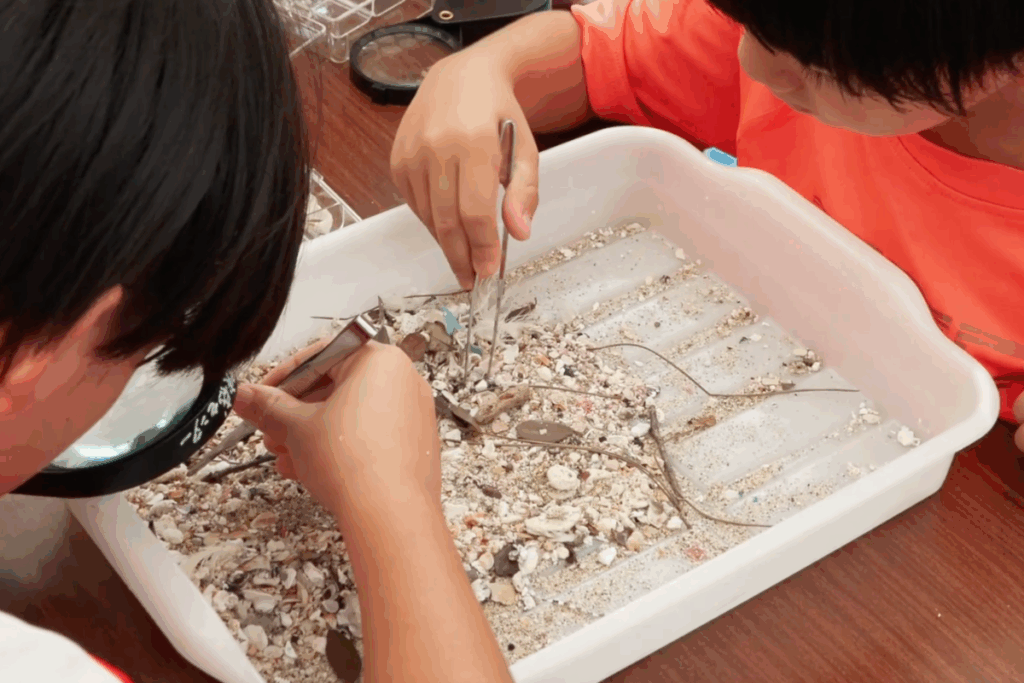
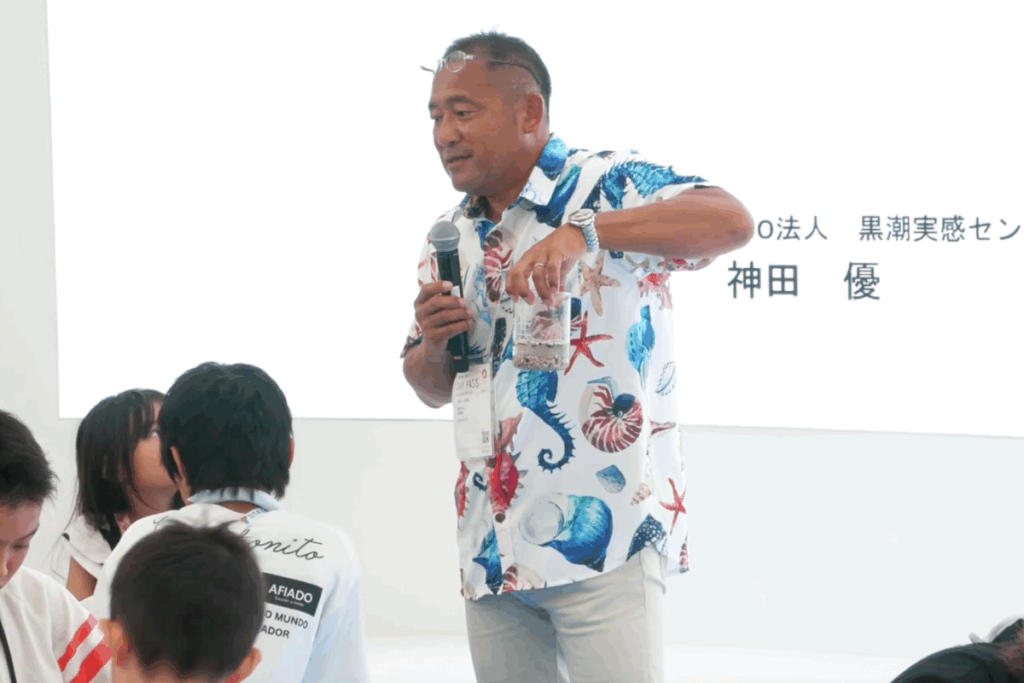
Healthy and Resilient Oceans – Uncover the Secrets of Marine Life and Life! – by NPO Kuroshio Zikkan Center
The first half of Tuesday, August 26th, continued on from the previous day with a workshop led by Mr. Kanda, Chairman of the NPO Kuroshio Zikkan Center. Based on the theme of “Healthy and Resilient Oceans,” he explained the “Sea Forest Creation” initiative. He introduced the creation of spawning beds for bigfin reef squid using cypress branches and a project to increase the production of “tokoroten,” a type of jelly made from the seaweed “tengusa,” on Kashiwajima Island, in order to address the problem of “isoyake,” or seaweed erosion.
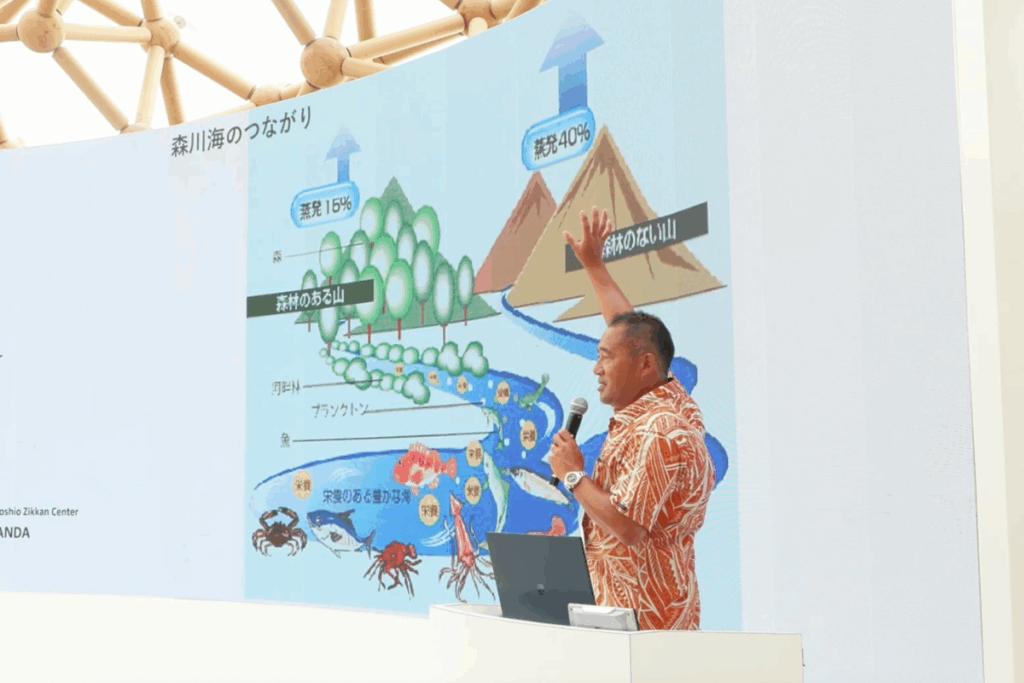
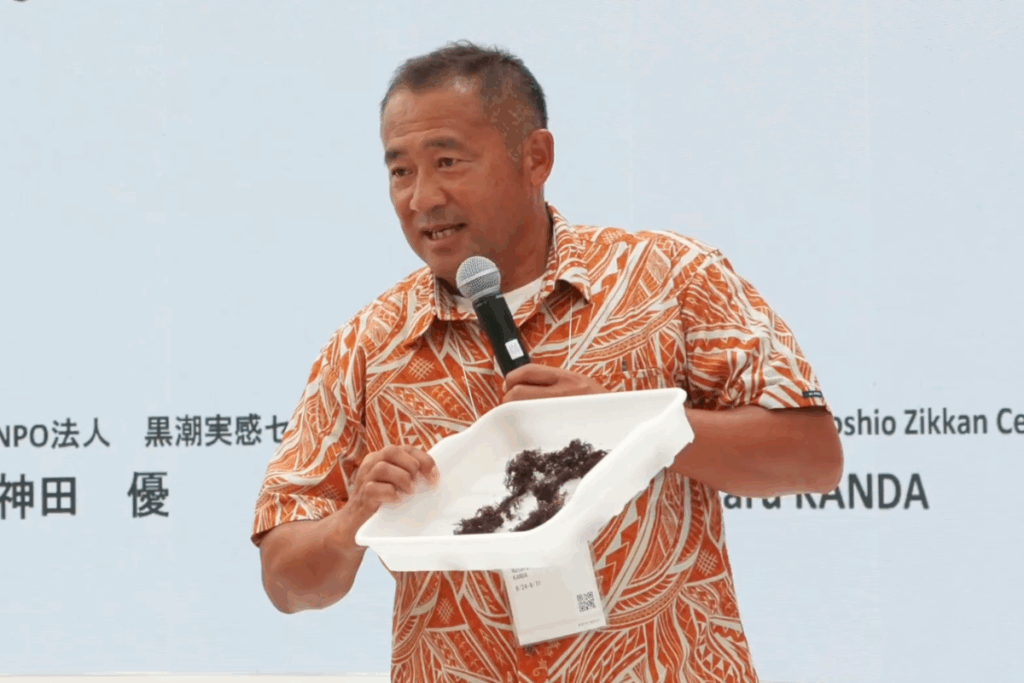
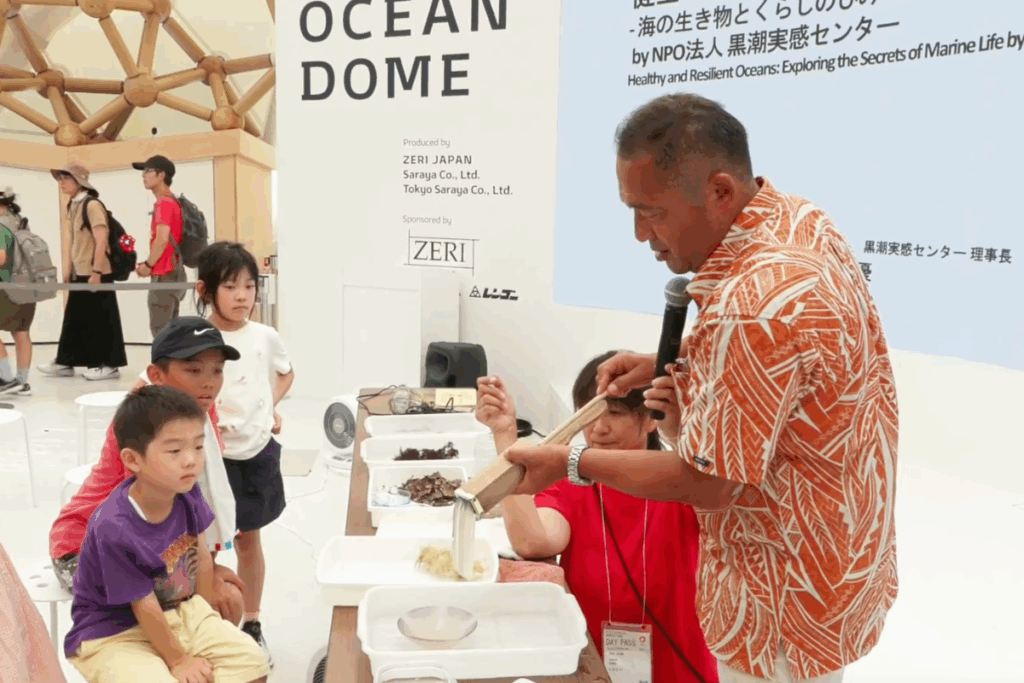
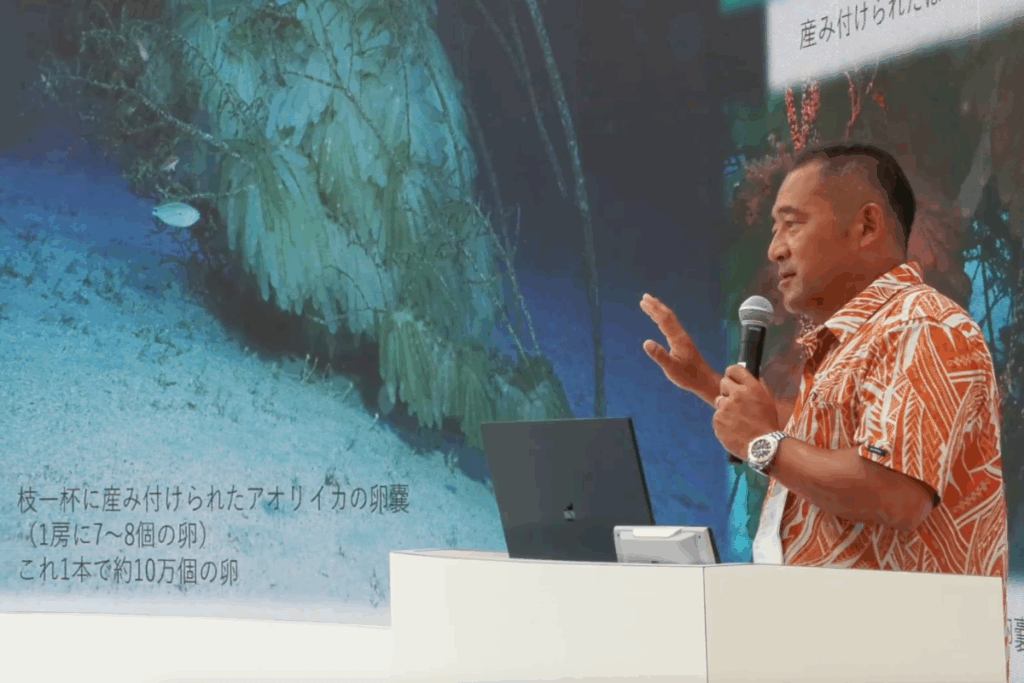
Healthy and Resilient Oceans – Uncovering the Secrets of Marine Life and Life! – by Kaiyukan
The second half of Tuesday, August 26th, Mr. Inoue, a zookeeper at Kaiyukan, continued on from the previous day and conducted a workshop titled “Tales of the Ocean Taught by Whale Sharks.” Mr. Inoue mentioned that the Osaka Aquarium Kaiyukan keeps two whale sharks, explaining that they eat small plankton such as krill and sand lance, and that feeding them is a way to check their health.
In the middle of the workshop, there was a time for participants to get up close and personal with the plankton in Osaka Bay, providing an opportunity for children to think about marine life.
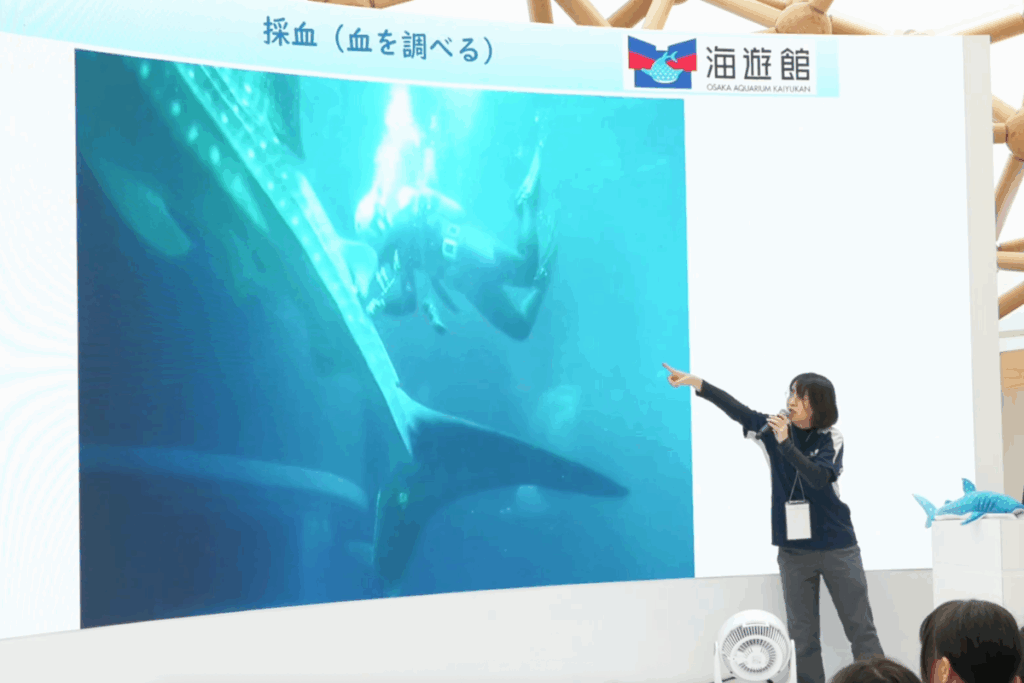
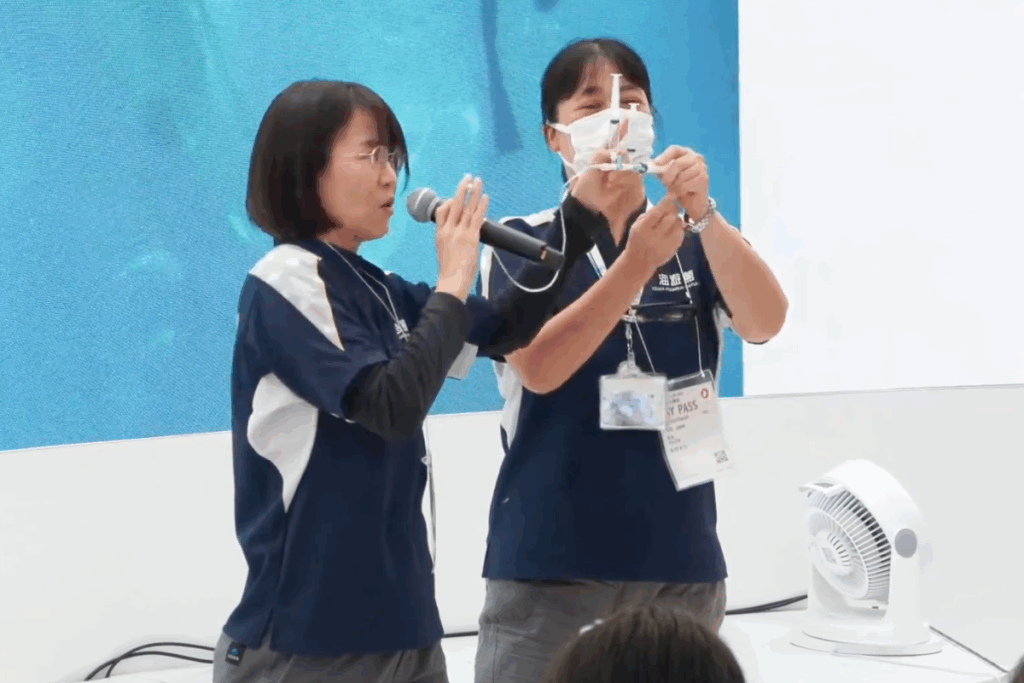
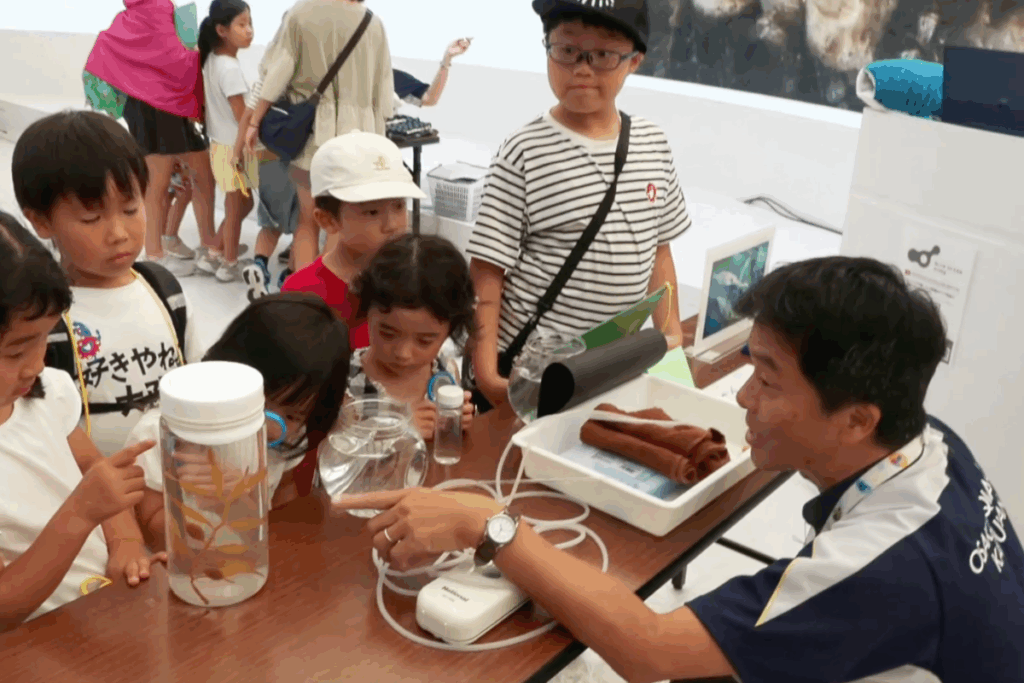
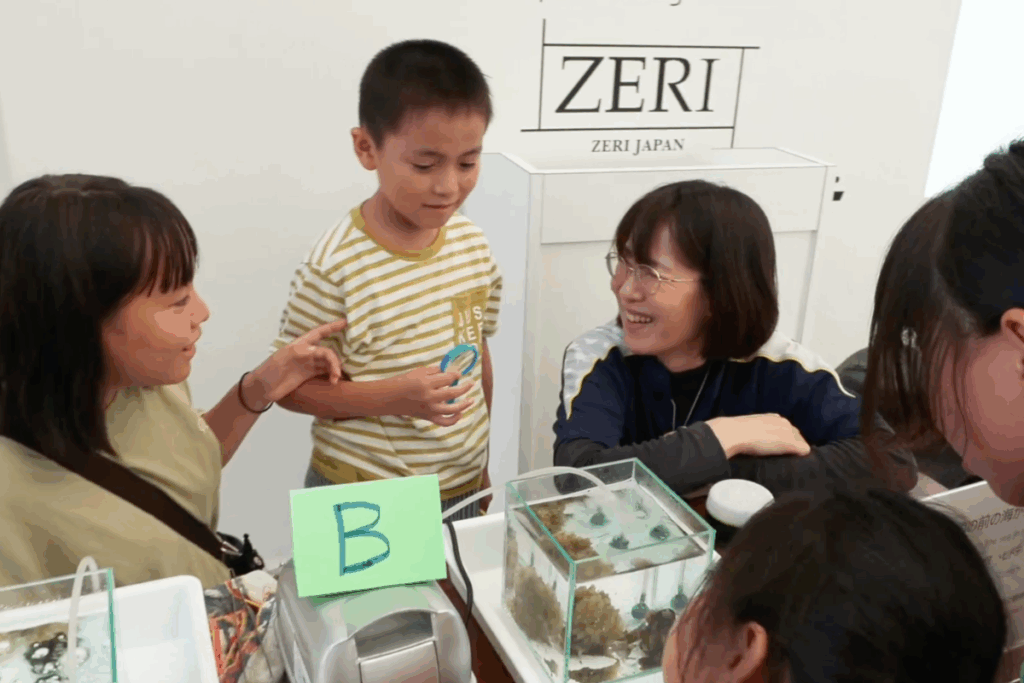
An Ocean Open to All – What is Ocean Observation? Let’s Use Sensors and Data! – by JAMSTEC
On Wednesday, August 27, a lecture was held on the theme of “An Ocean Open to All,” covering the overview and role of ocean observation in two parts. In the first half, Tomohiko Tsunoda, Technical Advisor at the Cabinet Office’s Ocean Policy Promotion Secretariat, gave a talk on climate change and oceanography. Using an aquarium experiment to examine convection, he explained the impact of climate change on the ocean.
In the second half of the event, Yu Nishikawa, Deputy Chief Scientist at the Japan Agency for Marine-Earth Science and Technology, took the stage to discuss the damage to marine resources caused by undersea volcanic eruptions. He also introduced related research and the use of ocean data.
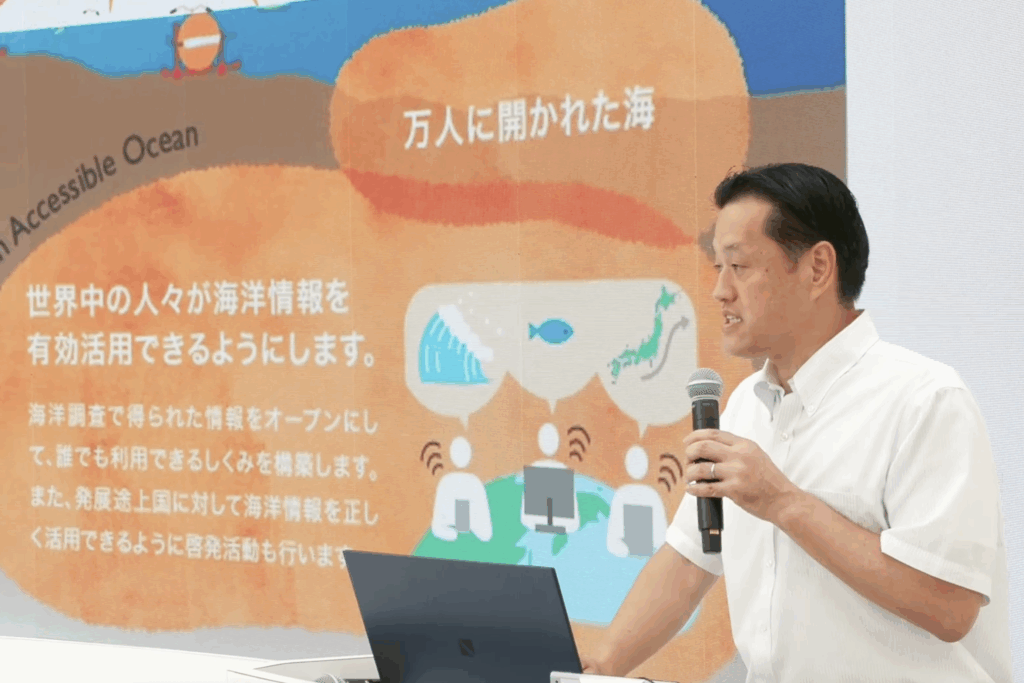
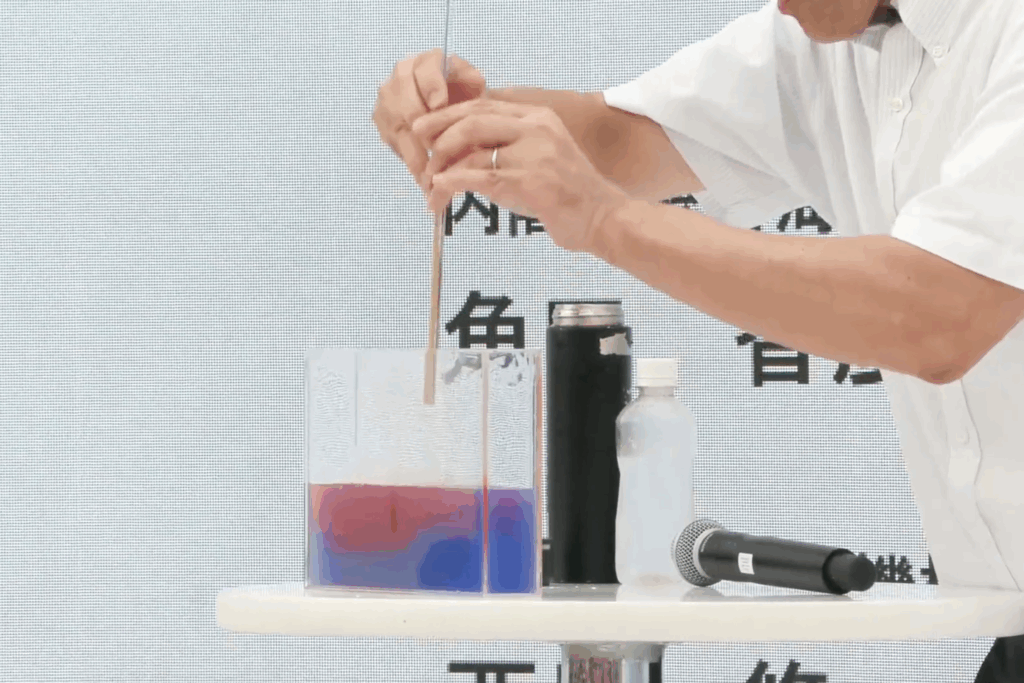
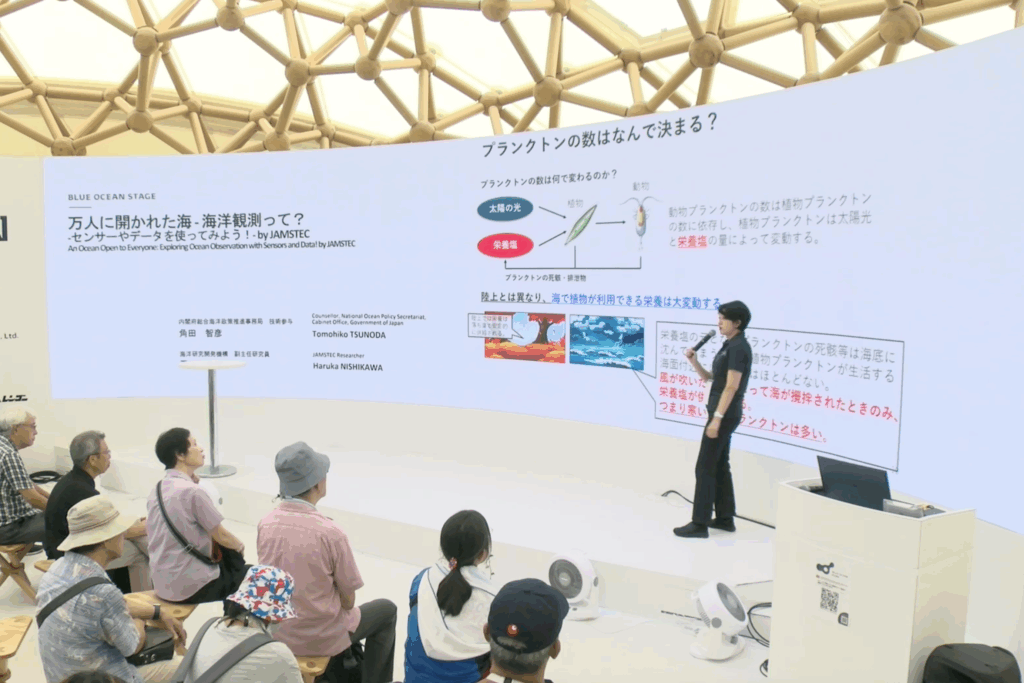
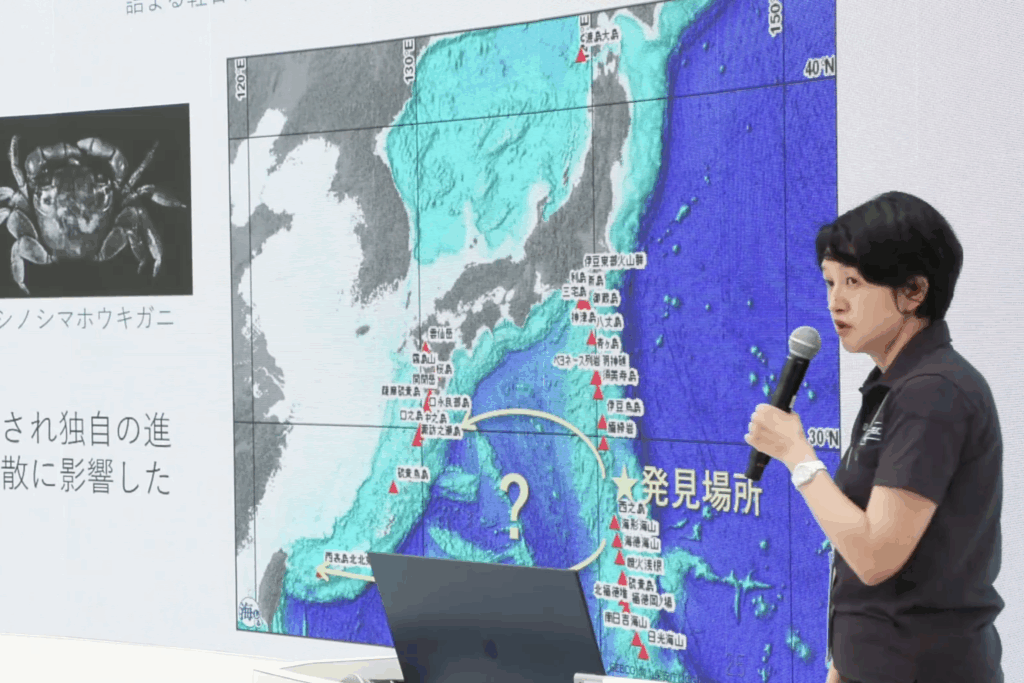
Predictable Oceans – From 10 Seconds to 100 Years Ahead!? Take a Glimpse into the Future of the Ocean! – by J-DESC and JAMSTEC
On Thursday, August 28, he gave a lecture on the theme of “Predictable Oceans,” highlighting how studying past environments can help predict the oceans of the future. His lecture covered topics such as polar exploration in Antarctica, research into past climate patterns using seafloor mud, and the Nankai Trough earthquake observation activities aboard the drilling vessel Chikyu.
At the end of the lecture, a tour of the drilling vessel Chikyu was held online, providing the audience with an immersive experience aboard the vessel.
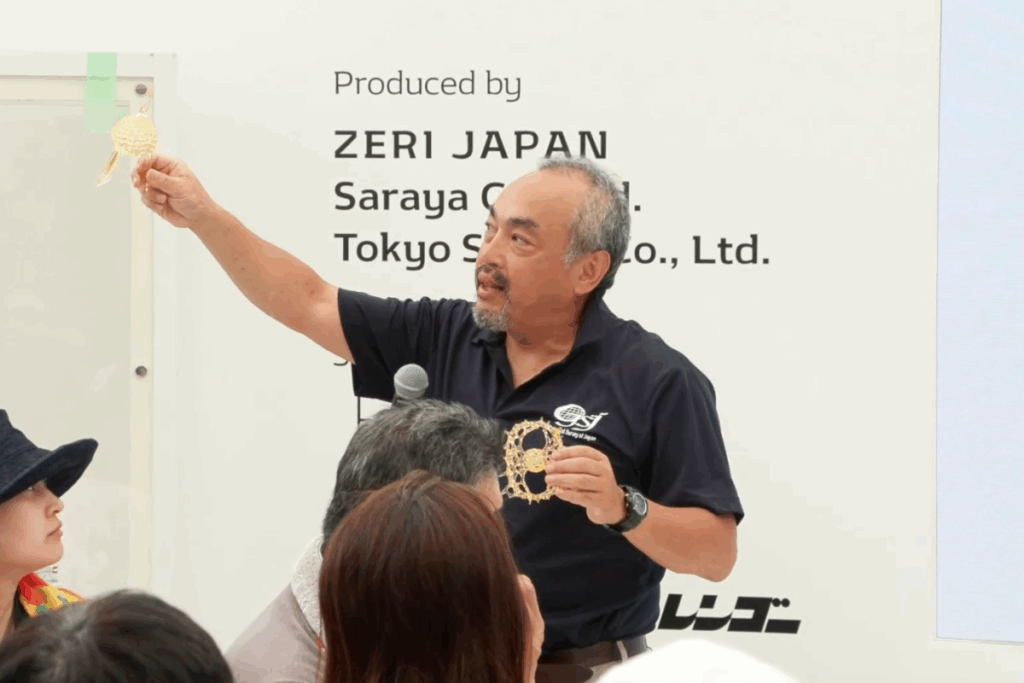
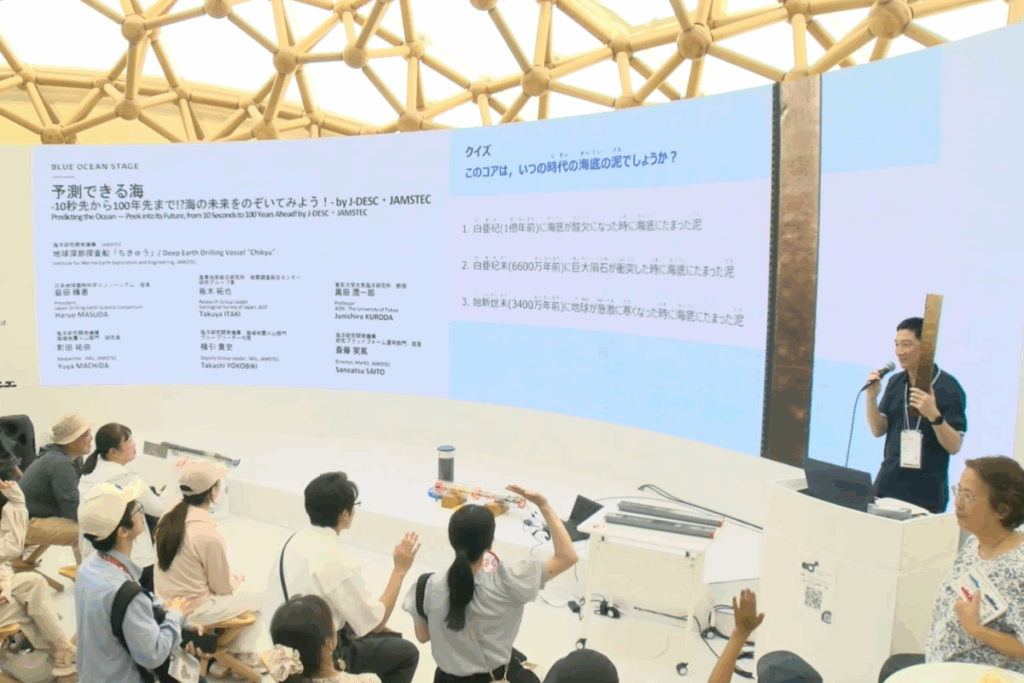
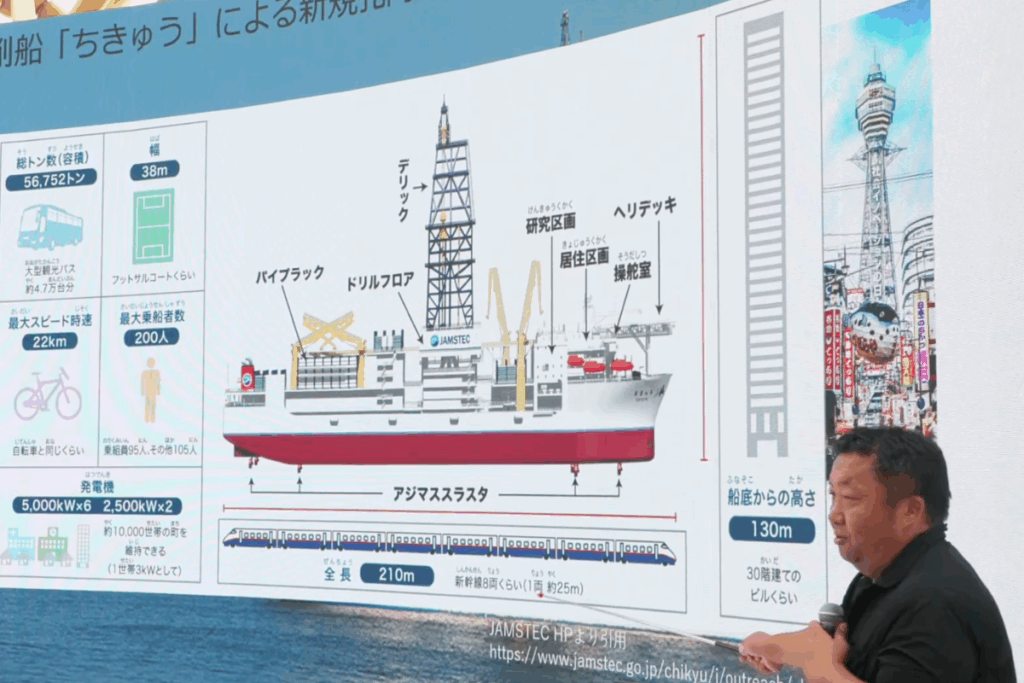
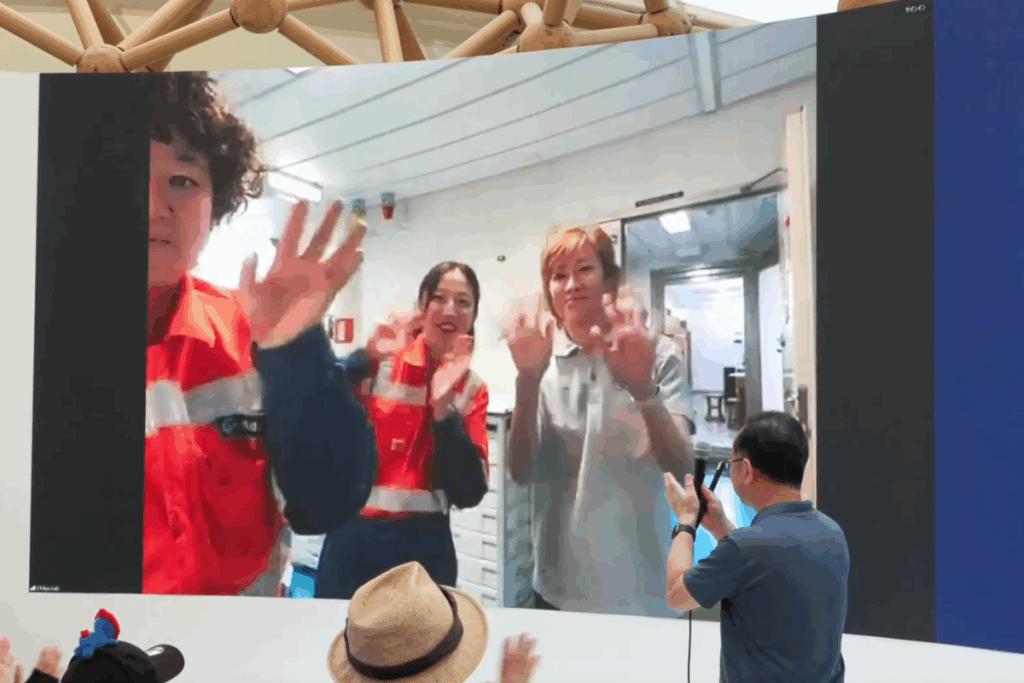
Safe Oceans – Why do earthquakes and tsunamis occur? Let’s have fun learning about marine disasters and disaster prevention! – by J-DESC・JAMSTEC
On Friday, August 29th, a lecture was held on the theme of “Safe Oceans.” The lecture covered topics such as “Why earthquakes and tsunamis occur,” “The impact of and prediction of undersea volcanic eruptions,” and “Surveys being conducted to predict the occurrence of Nankai Trough earthquakes,” raising participants’ awareness of disaster prevention. Following on from the previous day, the lecture concluded with an online connection to the drilling vessel “Chikyu” to share a glimpse of the ship’s interior.
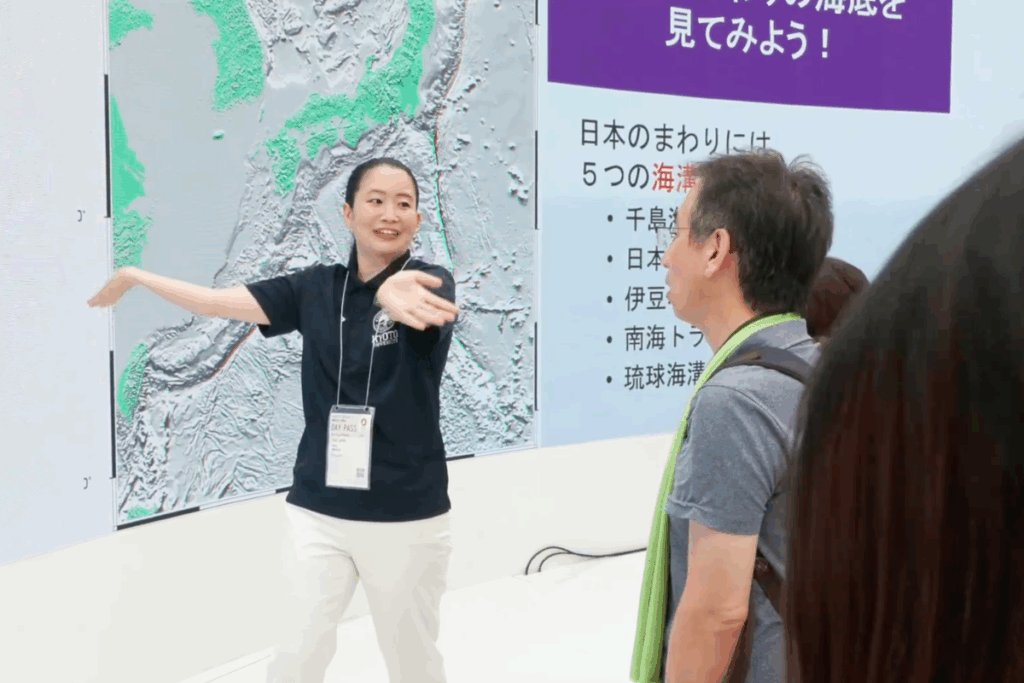
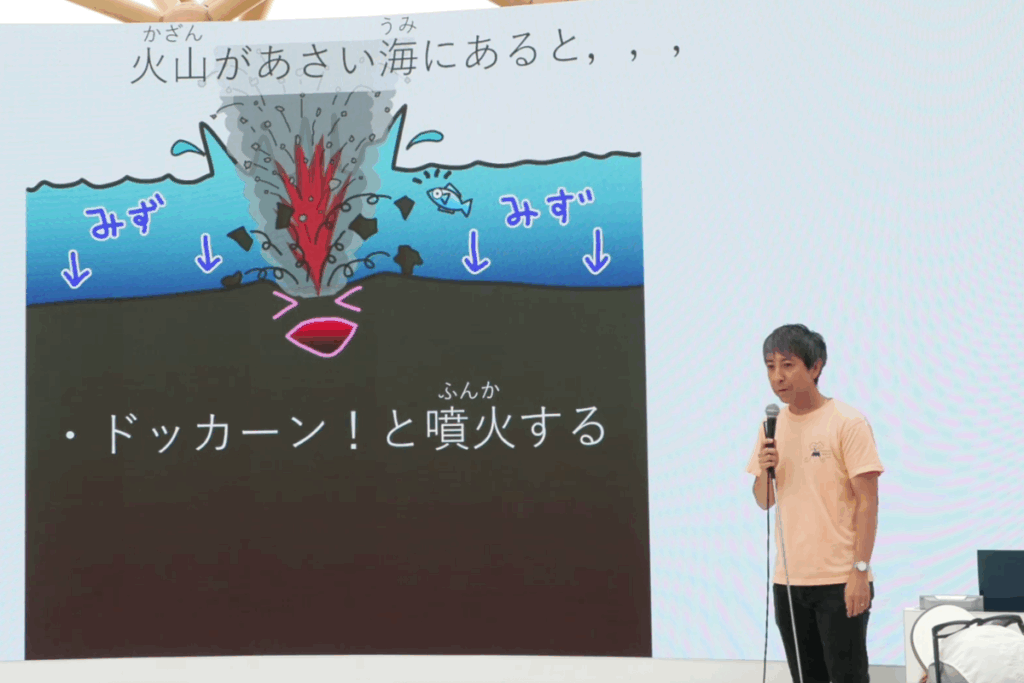
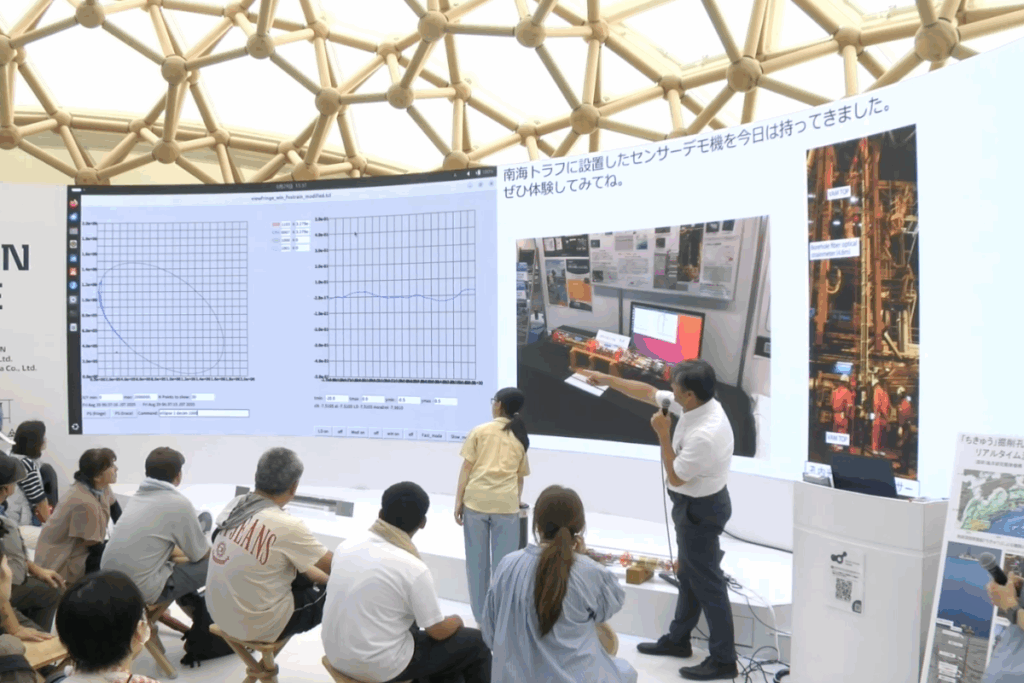
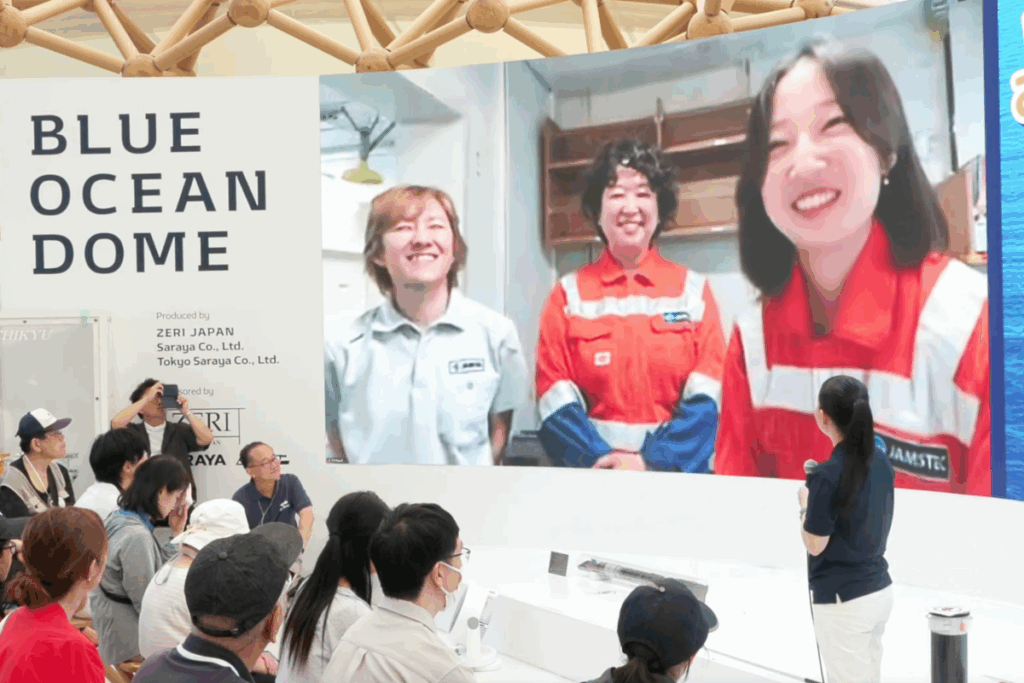
A Fascinating Ocean Filled with Dreams – Let’s all understand and cherish the ocean! – by Atmosphere and Ocean Research Institute, The University of Tokyo
On Sunday, August 31st, a workshop was held on the theme of “A Fascinating Ocean Filled with Dreams.” To help children learn about the ocean in a fun way, the workshop focused on the bigfin reef squid (Obiulus finberghii). Participants crafted “squid catchers” that mimicked the squid’s feeding behavior, while experts from the Atmosphere and Ocean Research Institute, The University of Tokyo, provided a detailed explanation of the squid’s ecology.
The event also touched on global warming, explaining how changes in the Earth’s environment will affect the lives of marine creatures, including bigfin reef squid, providing an opportunity for children to think about the future of our oceans.
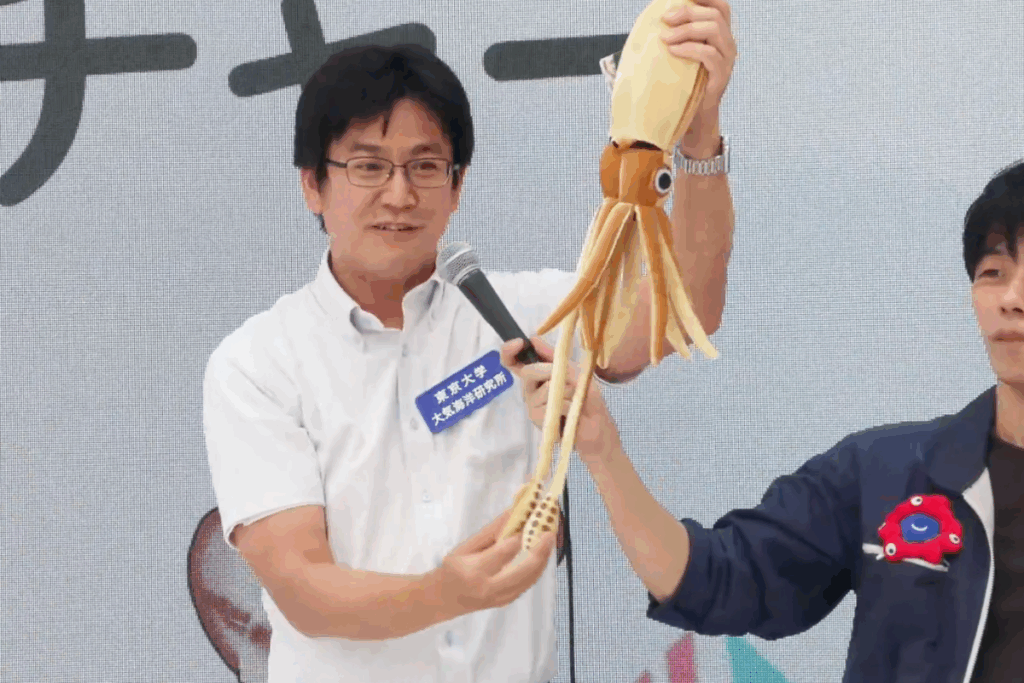
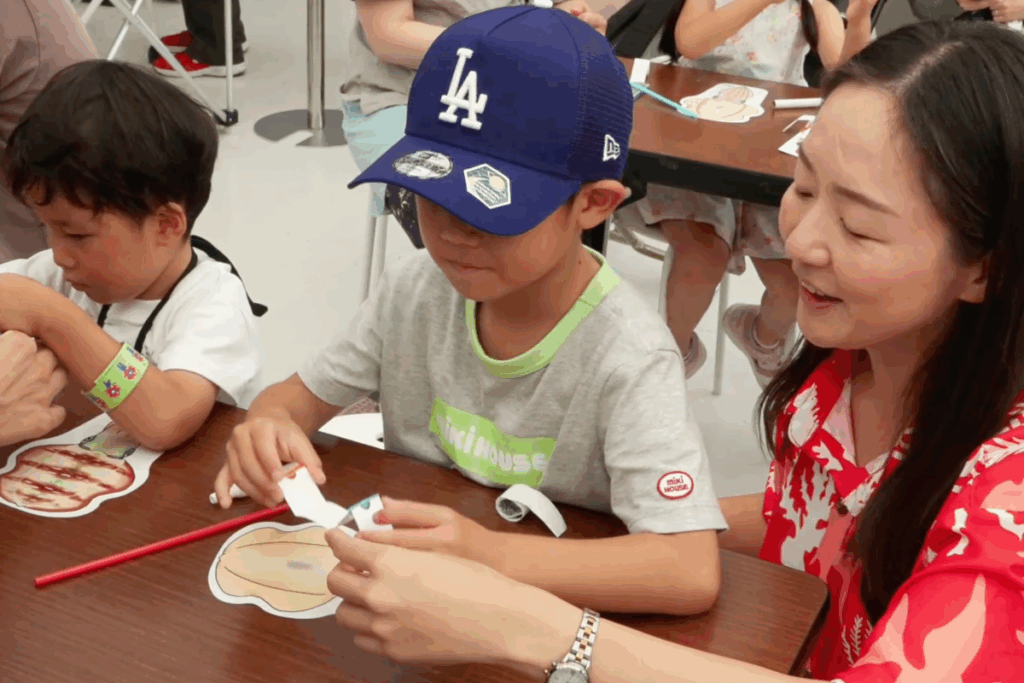
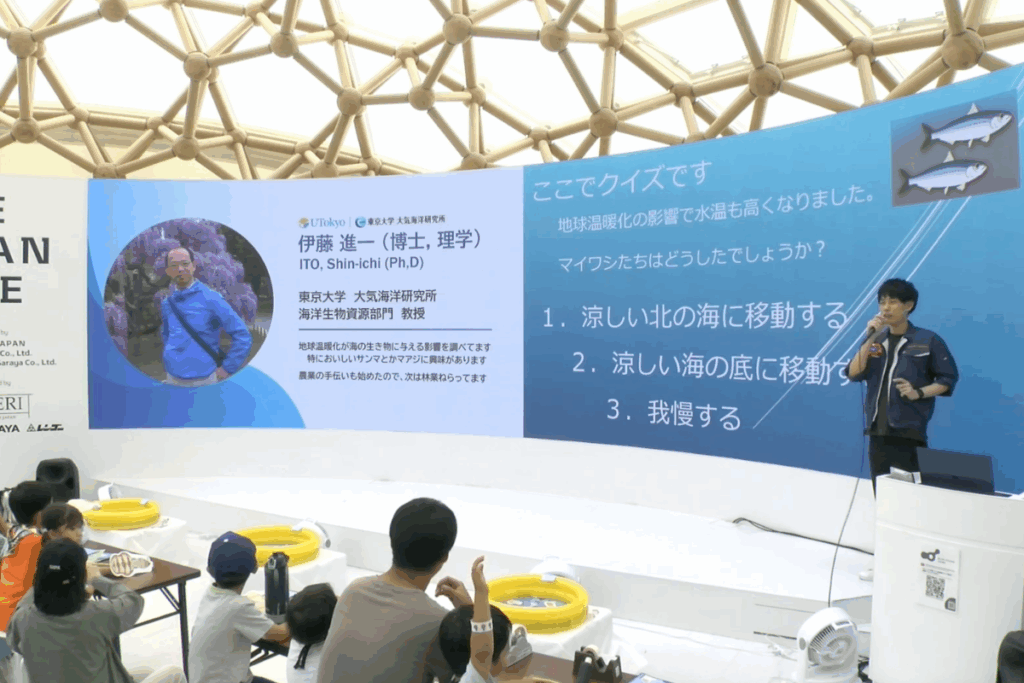
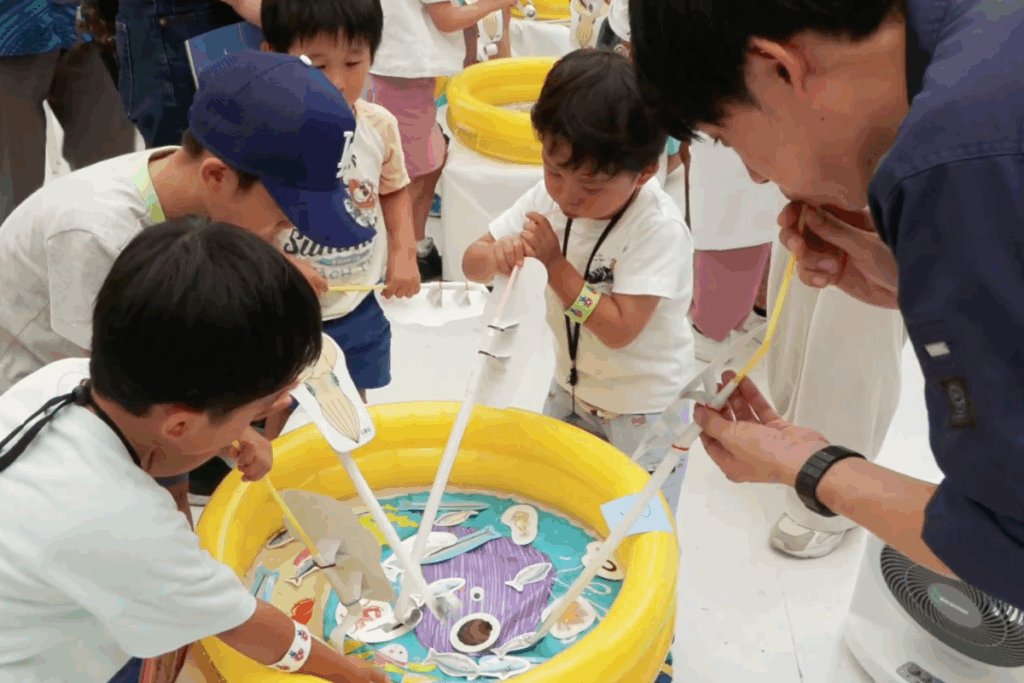
▼The event is currently available on the BLUE OCEAN DOME Official YouTube Channel. Please take a look.
【#105】 Clean Oceans – Learn about marine debris and the water cycle! – by Kaiyukan (ZERI JAPAN/Ocean Policy Research Institute, Sasakawa Peace Foundation)
【#106】Clean Oceans – Learn about marine debris and the water cycle! – by NPO Kuroshio Experience Center (ZERI JAPAN/Ocean Policy Research Institute, Sasakawa Peace Foundation)
【#107】Healthy and Resilient Oceans – Uncover the Secrets of Marine Life and Life! – by NPO Kuroshio Experience Center (ZERI JAPAN/Ocean Policy Research Institute, Sasakawa Peace Foundation)
【#108】Healthy and Resilient Oceans – Uncover the Secrets of Marine Life and Life! – by Kaiyukan (ZERI JAPAN/Ocean Policy Research Institute, Sasakawa Peace Foundation)
【#110】Oceans Open to All – What is Ocean Observation? Let’s Use Sensors and Data! – by JAMSTEC (ZERI JAPAN/Ocean Policy Research Institute, Sasakawa Peace Foundation)
【#112】Predictable Oceans – From 10 Seconds to 100 Years Ahead!? – by J-DESC and JAMSTEC (ZERI JAPAN/Ocean Policy Research Institute, Sasakawa Peace Foundation)
【#113】Safe Oceans – Why Do Earthquakes and Tsunamis Occur? – by J-DESC, JAMSTEC (ZERI JAPAN/Ocean Policy Research Institute, Sasakawa Peace Foundation)
【#114】A Fascinating Ocean Full of Dreams – Let’s all understand and cherish the ocean! – by Atmosphere and Ocean Research Institute, University of Tokyo (ZERI JAPAN/Ocean Policy Research Institute, Sasakawa Peace Foundation)